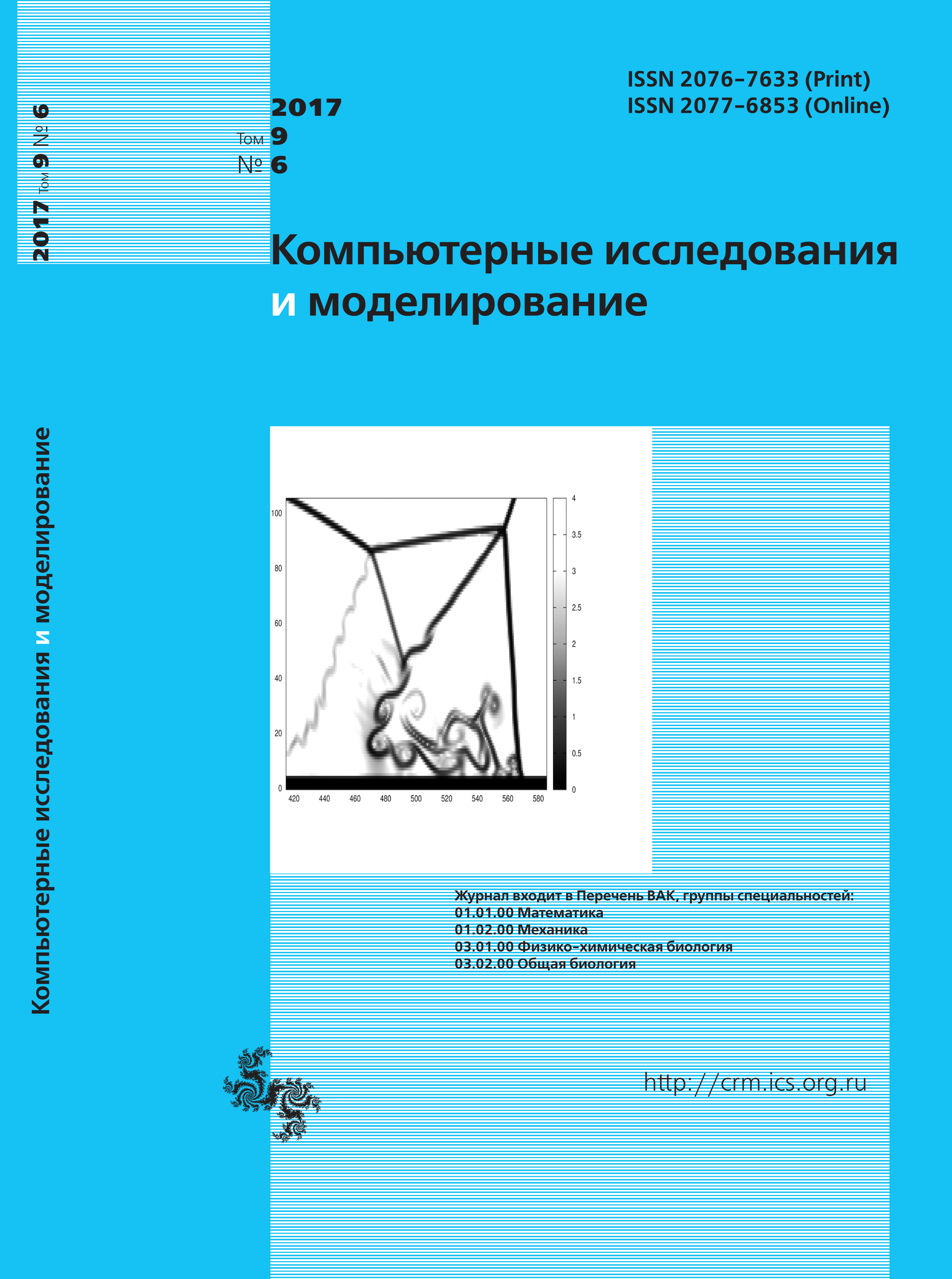All issues
- 2025 Vol. 17
- 2024 Vol. 16
- 2023 Vol. 15
- 2022 Vol. 14
- 2021 Vol. 13
- 2020 Vol. 12
- 2019 Vol. 11
- 2018 Vol. 10
- 2017 Vol. 9
- 2016 Vol. 8
- 2015 Vol. 7
- 2014 Vol. 6
- 2013 Vol. 5
- 2012 Vol. 4
- 2011 Vol. 3
- 2010 Vol. 2
- 2009 Vol. 1
Four-factor computing experiment for the random walk on a two-dimensional square field
Nowadays the random search became a widespread and effective tool for solving different complex optimization and adaptation problems. In this work, the problem of an average duration of a random search for one object by another is regarded, depending on various factors on a square field. The problem solution was carried out by holding total experiment with 4 factors and orthogonal plan with 54 lines. Within each line, the initial conditions and the cellular automaton transition rules were simulated and the duration of the search for one object by another was measured. As a result, the regression model of average duration of a random search for an object depending on the four factors considered, specifying the initial positions of two objects, the conditions of their movement and detection is constructed. The most significant factors among the factors considered in the work that determine the average search time are determined. An interpretation is carried out in the problem of random search for an object from the constructed model. The important result of the work is that the qualitative and quantitative influence of initial positions of objects, the size of the lattice and the transition rules on the average duration of search is revealed by means of model obtained. It is shown that the initial neighborhood of objects on the lattice does not guarantee a quick search, if each of them moves. In addition, it is quantitatively estimated how many times the average time of searching for an object can increase or decrease with increasing the speed of the searching object by 1 unit, and also with increasing the field size by 1 unit, with different initial positions of the two objects. The exponential nature of the growth in the number of steps for searching for an object with an increase in the lattice size for other fixed factors is revealed. The conditions for the greatest increase in the average search duration are found: the maximum distance of objects in combination with the immobility of one of them when the field size is changed by 1 unit. (that is, for example, with 4×4 at 5×5) can increase the average search duration in e1.69≈5.42. The task presented in the work may be relevant from the point of view of application both in the landmark for ensuring the security of the state, and, for example, in the theory of mass service.
Indexed in Scopus
Full-text version of the journal is also available on the web site of the scientific electronic library eLIBRARY.RU
The journal is included in the Russian Science Citation Index
The journal is included in the RSCI
International Interdisciplinary Conference "Mathematics. Computing. Education"







